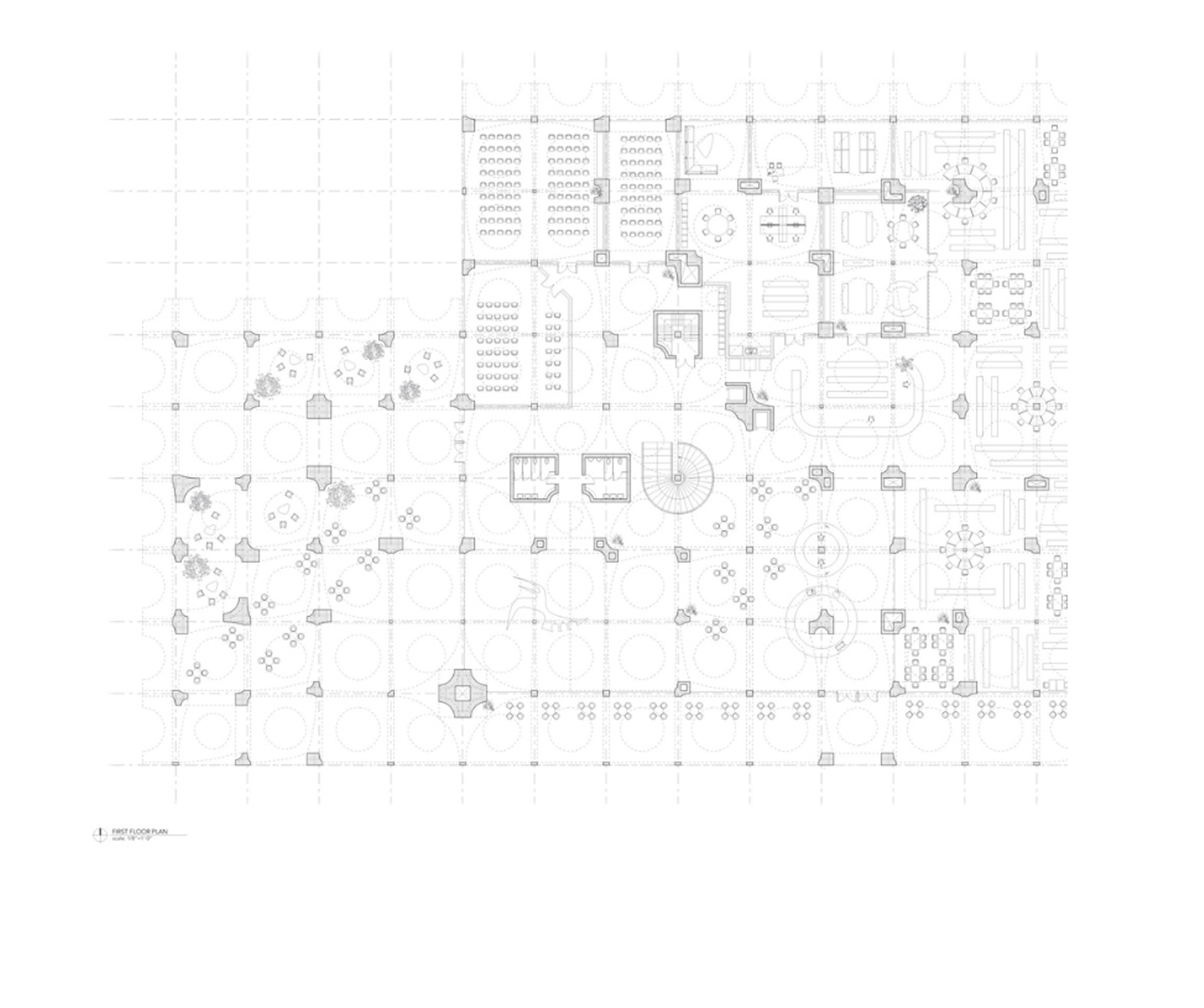Genealogies of the Column
UCLA Research Studio, 2014-2015
This research studio constructs eight genealogies of the column with acts of writing, curation, and design culminating in speculative design proposals for a new Arts and Architecture Library at UCLA. Our work seeks to understand the various manners in which the articulation of the column contributes to disciplinary notions of space. Space, an immaterial medium, relies on more physical architectural signifiers to articulate its presence; one such signifier is the column. The column is deeply connected to spatial, tectonic, and material orders and as such embodies theoretical positions regarding these orders, each of which is central to architectural expression. From excessively massive to improbably slender, distributions of material as column articulate theories of space.
The column is at once symbolic and operative, ornamental and functional, and excessive and necessary. Its status as an object is marked by geometric variations in silhouette, mass, and termination coalescing in its particular figural presence or formal order. Its formal specificity simultaneously articulates the significance of the elements around it the ground, the ceiling, and space.
The column, particularly a series of columns, is instrumental in the representation of ground. The base of the column reiterates the presence of a ground while its top either implies or makes contact with the underside of yet another. The verticality of the column marks the distance and space between these horizontal data. As the column is repeated and positioned in series, it determines the character and rules of spatial order. The genealogy of the column maps the evolution of architectural syntax. The classical orders, for example, provide that the column’s proportions, profile, and detail are part of a language or set of rules that establish particular expectations regarding spatial organization and procession. Across architectural periods, the column is central to architectural syntax and is inextricably linked to tectonic order literally and symbolically.
Tectonic order is the structural distribution of material and form necessary to resist static and applied loads without excessive deflection or collapse. A column has the capacity to affirm, defy, or adjust one’s expectations of structure often through the posture of an individual component or its networked relationships to other structural members including the roof or floor. The column embodies the consolidation of geometry, material, and force into new distributions and thus reconstitutes the spatial medium of architecture.
Professor: Heather Roberge
Students: Jacob Bloom, Kimberly Daul, Yuan Dong, Julie Ehrlich, Kara Moore, Emma Price, Ji Qu, Maria Sviridova.
This research studio constructs eight genealogies of the column with acts of writing, curation, and design culminating in speculative design proposals for a new Arts and Architecture Library at UCLA. Our work seeks to understand the various manners in which the articulation of the column contributes to disciplinary notions of space. Space, an immaterial medium, relies on more physical architectural signifiers to articulate its presence; one such signifier is the column. The column is deeply connected to spatial, tectonic, and material orders and as such embodies theoretical positions regarding these orders, each of which is central to architectural expression. From excessively massive to improbably slender, distributions of material as column articulate theories of space.
The column is at once symbolic and operative, ornamental and functional, and excessive and necessary. Its status as an object is marked by geometric variations in silhouette, mass, and termination coalescing in its particular figural presence or formal order. Its formal specificity simultaneously articulates the significance of the elements around it the ground, the ceiling, and space.
The column, particularly a series of columns, is instrumental in the representation of ground. The base of the column reiterates the presence of a ground while its top either implies or makes contact with the underside of yet another. The verticality of the column marks the distance and space between these horizontal data. As the column is repeated and positioned in series, it determines the character and rules of spatial order. The genealogy of the column maps the evolution of architectural syntax. The classical orders, for example, provide that the column’s proportions, profile, and detail are part of a language or set of rules that establish particular expectations regarding spatial organization and procession. Across architectural periods, the column is central to architectural syntax and is inextricably linked to tectonic order literally and symbolically.
Tectonic order is the structural distribution of material and form necessary to resist static and applied loads without excessive deflection or collapse. A column has the capacity to affirm, defy, or adjust one’s expectations of structure often through the posture of an individual component or its networked relationships to other structural members including the roof or floor. The column embodies the consolidation of geometry, material, and force into new distributions and thus reconstitutes the spatial medium of architecture.
Professor: Heather Roberge
Students: Jacob Bloom, Kimberly Daul, Yuan Dong, Julie Ehrlich, Kara Moore, Emma Price, Ji Qu, Maria Sviridova.




